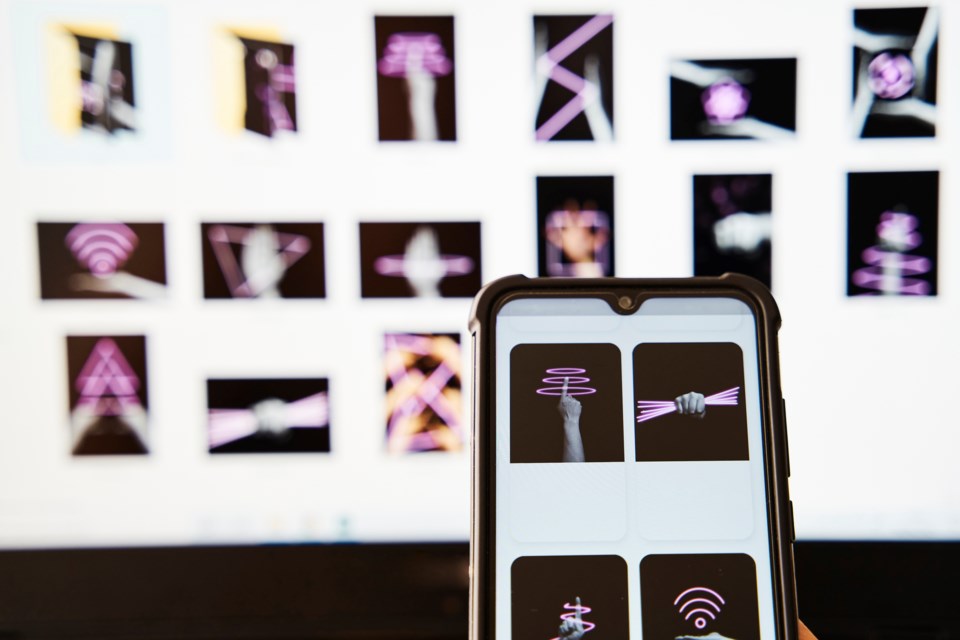Perhaps this popular buzzword can seem a little out of reach, but NFTs are becoming more mainstream, and not just for 'crypto nerds'.
The NFT community in Vancouver has been on the rise, and the city is having its first convention-style NFT event in May.
But what is an NFT? An NFT, which is an acronym for 'Non-Fungible Token,' is a "unique digital identifier that cannot be copied, substituted, or subdivided, that is recorded in a blockchain, and that is used to certify authenticity and ownership," by its dictionary definition.
The Bored Ape Yacht Club is just one of many successful examples of how NFTs can mesh together digital and physical worlds.
NFT becoming mainstream
As a whole, the NFT market continues to grow on a global scale. According to a Market Research report by QYResearch Group on the global NFT market size, status and forecast for 2022-2028, the global NFT market size "is projected to reach US$ 7.63 billion by 2028, from US$ 1.59 billion in 2021," which is a nearly five-fold increase over seven years. In 2021, art and collectibles made up over half of the global NFT market at nearly 70 per cent, proving its relevance to the art world.
The mainstream popularity of NFTs is also partially due to celebrities and brands.
Jhordan Stevenson is the co-founder of one of Vancouver's few digital-art galleries, Fomo NFT Gallery. "The reason NFTs have really skyrocketed in popularity is because almost every major artist in the world, like Justin Bieber [who has] has his own NFT– all these mainstream celebrities are coming out with their own NFTs which are making [them] in general just more popular," he explains.
Luxury brands, like Gucci, are also doing NFT launches. "I think they sold out $10 million or $50 million [of] virtual clothing for the metaverse, which are NFTs," says Stevenson. "A whole bunch of notable brands and artists are coming on board. They're kind of pumping up the popularity of NFTs in general."
But what about music?
Jonathan Simkin, founder of Simkin Artist Management and president of 604 Records, manages both musicians and NFT artists alike, representing Coleman Hell, Mad Dog Jones, Marianas Trench and Carmilla Sumantry, to name a few. "A lot of people who buy NFT pieces, especially people spending huge money, aren't music fans, for the most part. They're tech nerds and crypto nerds," he says.
"Different people are in this space for different reasons," he continues. "There are some people who are really committed to [the] decentralized [financial aspect], there's people who are committed to blockchain technology, there's people who just [want] to get a teaser. For me it was very much an art thing," he adds.
Simkin says that to sell NFTs within the music industry there needs to be a very different approach: "How do you sell an NFT to a Carly Rae Jepsen fan or a Marianas Trench fan?"
Aside from hosting the NFT BC event, Simkin's other big project is 604 Infinite– 604 Records' own NFT marketplace with a series of educational videos aimed at music fans.
"I see a new way for fans to interact with their favourite artists and their favourite recordings, to discover new artists, and to feel a sense of ownership in the art. And a way for us to breathe new life into artwork and music. It also adds a new revenue stream for artists, many of whom are hurting because of the pandemic," Simkin states in a press release for 604 Infinite.
The digital-art platform aims to "make the art affordable and accessible to fans," with how-to guides and learning resources for fans who may be intimidated by NFTs and cryptocurrency, writes the press release.
Metaverse Portal
Stevenson is also launching a project to help elevate NFTs in art, and to educate those interested in digital art and cryptocurrency.
The Fomo NFT Gallery serves foremost as a Metaverse portal, and will help individuals and businesses alike enter the NFT world through teaching, training and creating NFTs. The gallery is second-tier, according to Stevenson.
"We're planning to do a whole bunch of informational sessions, and we really want to emphasize that we want to be a place where people can come learn," Stevenson says.
Though the gallery will display NFTs and digital art on screens, they will also create their own NFTs through 3D scanning and photo mapping technology, partnering with artists and displaying their own in-house NFTs as well. "It's really a studio where we create and then also promote other artists and NFTs in the space as well," explains Stevenson.
The Metaverse portal and art gallery focuses on all kinds of NFTs and digital products for the Metaverse. "We have one of the best, highest resolution 3D scanners. So we're able to 3D scan any physical object, and then create a digital asset through that then create an NFT, or digital asset that we can then sell in a digital world or the Metaverse," explains Stevenson.
The gallery has already launched its first in-house collection, Fomo Skullz– a digitalized Vervet Monkey skull that was 3D-scanned and made into NFT art. The Vervet Monkey skull is the first skull to be released, with a new skull added to the collection each month.
With the increasing popularity of NFTs, platforms like 604 Infinite and The Fomo NFT Gallery are just some of the key players in making NFTs mainstream in the art and music worlds.


